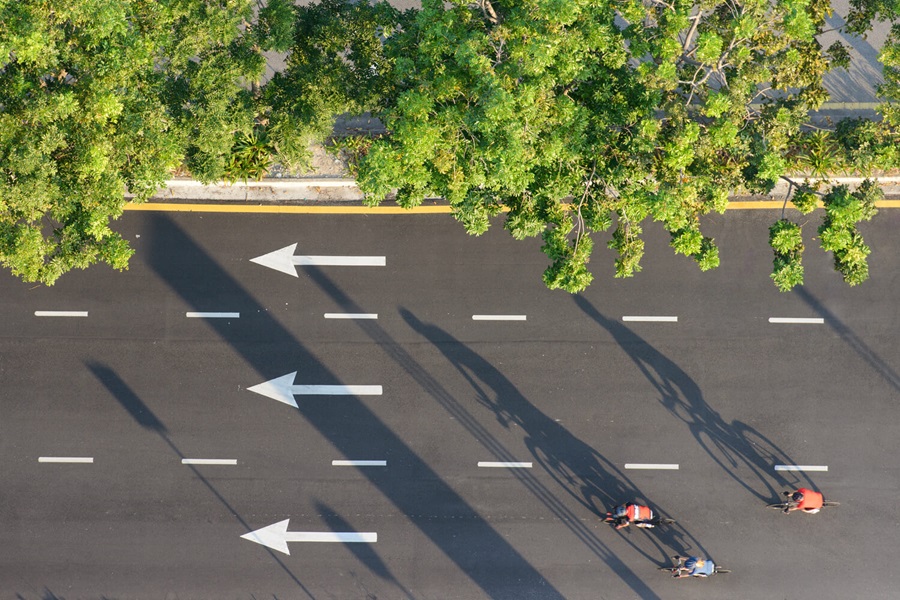As advertisers are promoting products and services to people around the world every day, there is a huge opportunity to include more sustainable behaviours in the stories that they tell, whether or not the brand has a sustainable message to convey. Sustainable behaviours shown in ads don’t have to be explicitly related to the brand to have an impact - it could be a smartphone ad showing people using a sustainable transport method, or an ad for a drink depicting someone living in a home powered by solar panels.
In support of Every Brief Counts, Kantar is working with Ad Net Zero on a project to track sustainable behaviours in ad campaigns globally – by analysing the LINK ad testing database on a quarterly basis. The Sustainable Behaviour Ad Tracker gives the industry a new level of insight, giving us the ability to benchmark how performance is trending over time, as well as across categories and markets.
We revealed a first high-level look at the tracker in February, and now as the ad industry gears up for Cannes LIONS festival of creativity this week, we’re sharing far more granular insights into the state of sustainable ad behaviours around the world.
Headroom for growth
Out of 6,400 ads tested by Kantar clients between November 2024 and May 2025, we find only 6% include sustainable behaviours as either background or foreground of an ad. The most common sustainable behaviours shown relate to travel and transport (3%), products or packaging, and food or diet (2% each). The least commonly depicted behaviour is sustainable energy choices (1%).Leading the way in sustainable advertising is Germany, which at 13% has more than double the global average, followed by France, Australia, Spain and UK. The world’s two largest economies are in line with the average (China 6% and US 5%). At the other end of the spectrum we have not yet seen sustainable behaviours modelled in any of the ads we have tested recently in Thailand, Philippines, Saudi Arabia or Peru.
When digging a bit deeper into the types of behaviours shown in ads, sustainable travel and transport gets the most airtime in Germany, whereas greener food and diet choices are shown most often in Australia, meanwhile sustainable energy choices are shown most in the Netherlands and products and packaging in Spain.

Crossing the channel
The presence of sustainable behaviours currently seems to vary based on where the ads appear. We see greater prevalence of sustainable behaviours in TV ads (6%), and less in digital, print or out-of-home ads (4%). With digital media spend rising rapidly, there is an opportunity for digital advertisers to up their game. There are also skews in the types of sustainable behaviours which appear in different channels. TV ads include more sustainable food and diet and product and packaging behaviours, digital ads include more sustainable energy behaviours while print and out of home ads are more likely to depict sustainable travel and transport.Who is getting it right?
This low starting point provides plenty of room for growth, but we can take inspiration from the many examples of sustainable behaviours being either explicitly or obliquely referenced in ads in a natural way.
In “Dear LL Bean” – a previous winner in Kantar’s annual Creative Effectiveness Awards, a young student is shown travelling to school on a classic yellow school bus, while engaging in the not particularly sustainable act of trying to destroy her LL Bean bag so she can get a new one. So, while the ad lands a message about the durability of LL Bean’s wares, it also shows the ease with which sustainable choices can be woven into ads.
The German supermarket chain Edeka was recently awarded as the most creative brand in the German BrandZ Top 50 awards. This spot showcases how they help shoppers maintain a small footprint by achieving the balance between affordable and more sustainable foods.
Another former Creative Effectiveness Award winner, Nissan’s “Dualities” ad, for its all-electric Ariya model, shows how for many brands sustainable messaging and showcasing sustainable choices can be a natural fit that go hand in hand. The ad nods to the duality of EV buyers – who want to make the right choice for the planet but also want high performance from their vehicle.
Watch Nissan's "Dualities" ad HERE
Moving forward
Ad Net Zero’s Every Brief Counts provides advertisers and agencies with practical guidance about how they can seamlessly include sustainable behaviours in advertising Kantar’s LINK creative testing solutions also enable advertisers to understand how the presence of sustainable behaviours resonates with consumers. For explicit sustainability messaging, advertisers can use LINK to assess whether their message makes people feel more positive about the brand and whether it is likely to contribute to positive changes in behaviour. For more implicit or oblique sustainability references, advertisers can gauge consumers’ response to these elements, and check that they are not causing any unintended effects.. As these ads are being developed,Together, Kantar and AdNet Zero will be returning in the Autumn of 2025 with further insights from the Sustainable Behaviours Ad Tracker...and hoping to see evidence of more advertisers in more markets doing their bit to model sustainable best practice. To learn more, get in touch with Kantar’s creative team, we’re here to help you navigate the journey towards more sustainable advertising practices.


